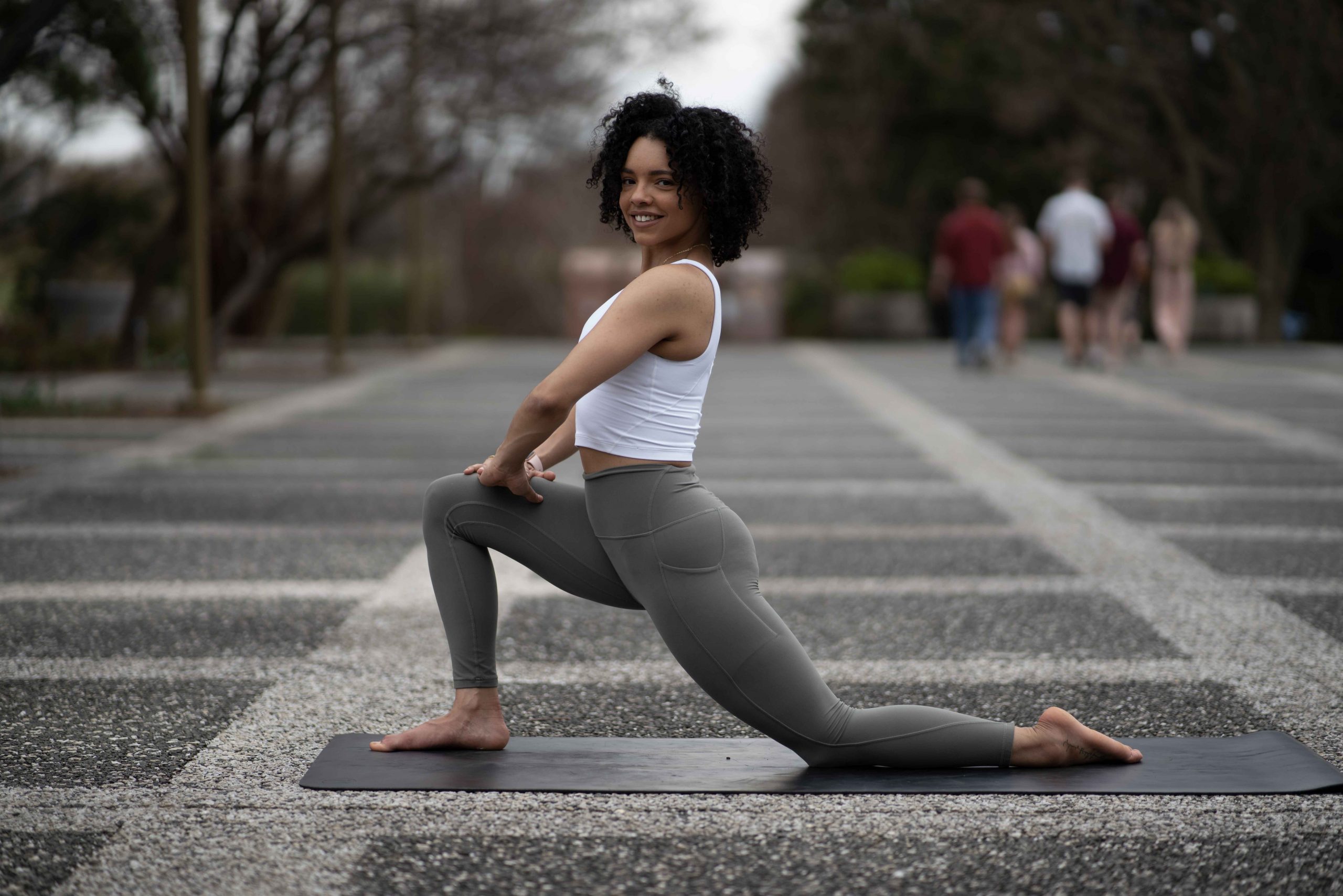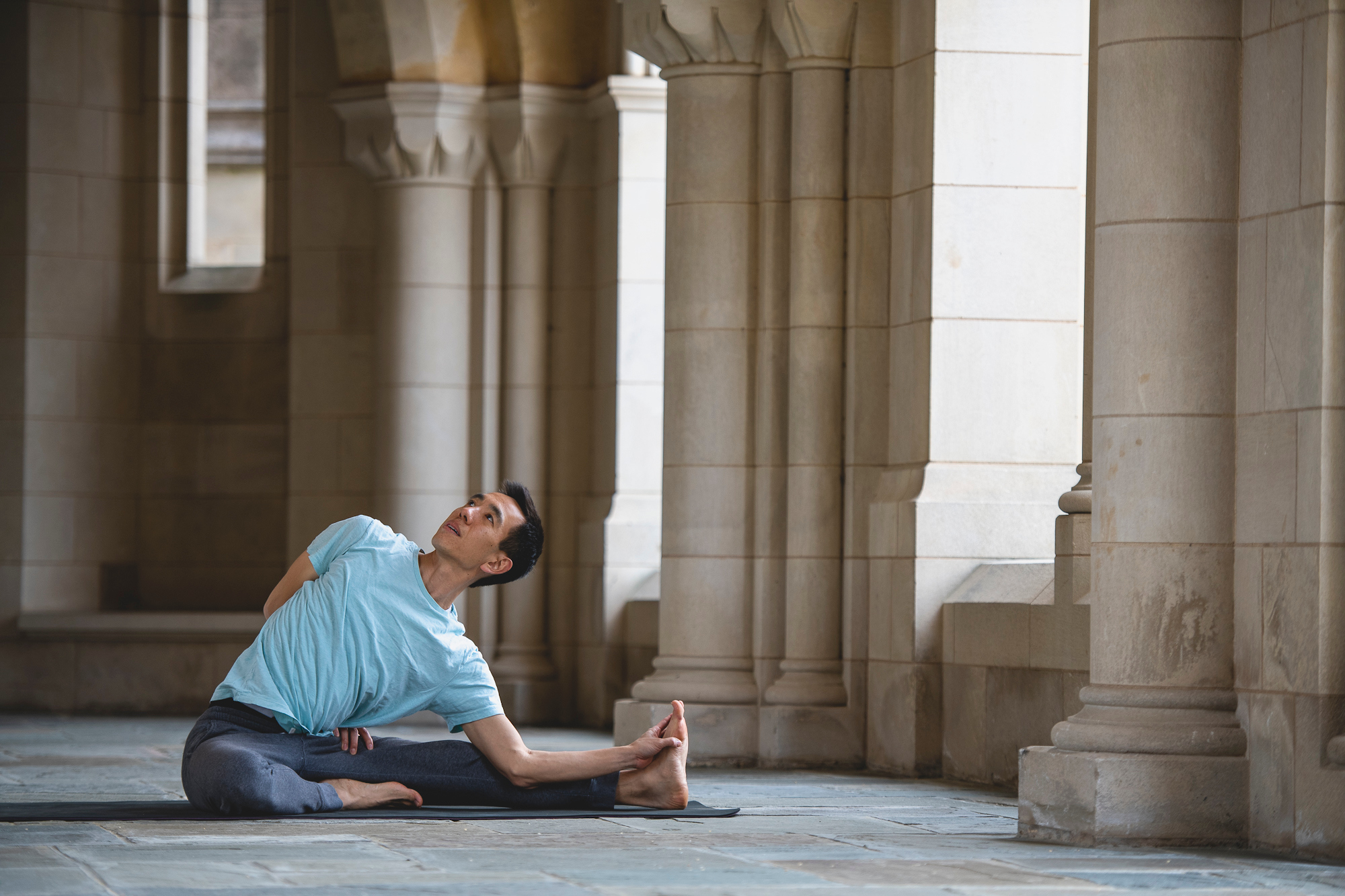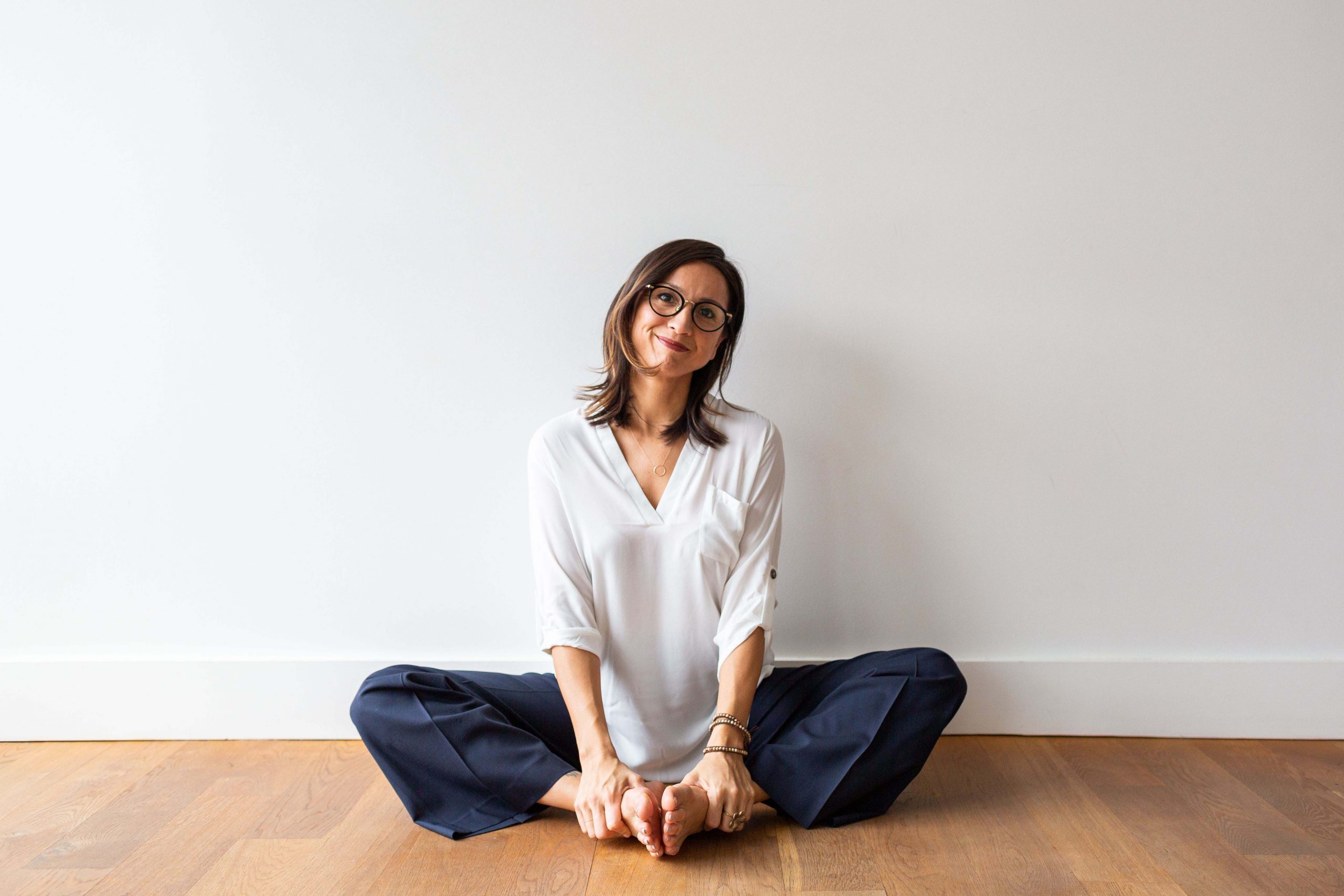Yoga 101: A Beginner’s Guide to Flexibility, Flow + Poses

My introduction to yoga was for college credit. I was required to take one physical fitness class to graduate and thought yoga would be the perfect excuse to take a nap midday. As I rested on my college gym floor in a pose I later learned was called savasana, I gained a lifelong activity that I still incorporate into my wellness routine. Six years later, I realize how fortunate I was to start my yoga journey in an academic setting. The introduction was a traditional college course with workbooks, assignments and a fixed meeting time. Its structure helped me understand different aspects of yoga beyond just physical activity and develop a routine practice.
Most people starting yoga may not be as lucky. There’s often not a lot of instruction or open conversations about the poses — and since yoga is a constant journey, most studio classes are open to people at varying levels. If fear of taking your first yoga class resonates, this guide is here to help. We’ve enlisted three top yoga experts — yoga instructor and Evolving Lives Body & Mind Founder Rachel Baylor; Epic Yoga and Outfit DC Yoga Instructor Arthur Uratani; and health coach, reiki master and Be Free, Live Fully Yoga Instructor Jessica Sandhu — to demystify yoga and inspire you to step into your practice.
Advice + Wisdom for Getting Started
District Fray: How did you get your start with yoga?
Rachel Baylor: I got started in 2014 during my graduate school years. I was studying clinical mental health counseling and learning different ways to practice self-care and mindfulness. Then I was in a car accident and did physical therapy. During my exit interview with my physical therapist, I still had some back pain, and she said, “Yoga core exercises will give you a good solid stretch, but they aren’t very strenuous on the body.” That’s when I decided to take yoga seriously.
Jessica Sandhu: I’ve always had issues with my lower back, and when I took an MRI, my doctors sent me to a physical therapist who taught me exercises to open up my spine. I realized these were the same as a yoga class I took [back in] 2001 or 2002. I remember really loving savasana. Yoga was an exercise, but it also helped me be quiet because I’m in my head all the time.
Arthur Uratani: I got into yoga about 10 years ago when my roommates asked if I wanted to go to a class. It was around the time I first started working and sitting at a desk, and I was already starting to have back issues. After that first yoga class, I felt so much better. I was like, “This is something I need to do on regular basis.”
What would you advise people who are intimidated entering a studio?
Baylor: I began by looking for free Eventbrite classes to get more acclimated. It was less intimidating than going into a studio where I felt people really knew what they were doing. This led me to meeting someone who introduced me to a yoga studio. I was also [intimidated] because I thought only white women who could afford Lululemon went to yoga studios. Meeting someone in a community space where there were women of color who looked like me helped [a lot].
What poses do you recommend for someone just starting their yoga journey?
Baylor: I would say mountain pose, warrior one, warrior two and chair pose. A big thing, too, is letting go of needing to know posture names. It’s the biggest thing I learned in yoga as a beginner. Every teacher is going to teach a class and cue postures differently. Just show up with an open mind and open heart, and you’ll learn along the way.
Sandhu: I teach a lot of private yoga and corporate yoga, in addition to teaching at studios and gyms. Everyone asks, “What is the easiest thing?” Any kind of forward bend. Take the time to form a [routine yoga] schedule, breathe and forward bend.
Uratani: The first step is just getting comfortable being in a yoga class, because the moves will come — whether it’s the most basic pose, or the most impossible arm balance. Watch your teacher and the other students in the class.

How do you normally approach beginners in your classes?
Baylor: Beginners may not have the same awareness of their bodies as someone who has been practicing for a while. So, a big thing I’ve done, especially teaching virtually during the pandemic, is shy away from using posture names. I just cue people into the posture, because it’s not about what a pose is called — it’s about getting there and experiencing it.
How long does it take for people to feel generally comfortable practicing?
Baylor: I would say you need to practice anywhere between two to three times a week for at least a month. [It’s also important to remain] open-minded, because you can’t judge yourself based off the first time. You have to give yourself grace and time to know what you’re going to feel. The second session will be different than the first, and the third is going to be different than the second. With each experience, there’s more insight into the depth of yoga.
Sandhu: It is varied. Just stick with it because there’s no one size fits all. Some people get really into it, and within a year they’re taking teacher training programs. They come to class, and I watch them accelerate. Then I have other people who just want maintenance practice.
Uratani: It’s different for everyone. Everyone’s body and background is different, and there’s some degree of becoming acclimated with your body. For me, I think it took about six or so months doing yoga once a week before I started feeling comfortable with my practice. It’s a slow, but enjoyable journey.
What do you say to people who say they lose focus during a yoga class?
Baylor: I encourage them to close their eyes: to shut off their senses, one by one, then turn them back on again. For example, if you’re in child pose or mountain pose, take a moment to close your eyes and notice how your toes feel when you lift them. Can you feel your palms? What do you hear? What do you feel? I encourage people to use their senses to focus within.
Sandhu: Follow your breath. A mindfulness-based yoga practice is definitely breathing and movement, and even meditation. Outside of yoga, doing crossword puzzles and gardening is a great way to channel [mindfulness].
How about those who get frustrated?
Uratani: Don’t try too hard. Sometimes we get frustrated with ourselves when we can’t accomplish something immediately, or we see someone doing something we can’t do as well. In sports, there’s a commonly used saying: “Focus on you. Focus on what you’re doing instead of focusing on what everyone else is doing.” I think that’s a transferable metaphor for what we do in yoga. Just focus on taking things slow and the poses will come.
What do you recommend for people who want to try different yoga styles?
Sandhu: Have specific teachers who offer certain things. I like a good Dharma teacher who’s more meditative and gets me into a really quiet space, and then I have a power yoga teacher I know is going to kick my ass.
How do people know when to start challenging themselves?
Uratani: When you don’t have to look at a teacher or those around you all the time. And when you get used to the nomenclature and the terms of yoga. You may surprise yourself, though, with how much you can accomplish early on. Depending on your background, you may be more inclined or predisposed to certain poses than other people. But as a general rule of thumb, once you are comfortable with the terminology and don’t need to rely on the teacher and other students to guide you — that’s when you can start to push yourself.

What props do you suggest for beginners?
Baylor: I do recommend getting the proper tools. They don’t have to be expensive. It could be a block or strap from T.J. Maxx — whatever you can afford.
Uratani: Blocks help a lot. Straps are used less than blocks, but they can help with exotic and difficult poses. For more restorative yoga classes, a bolster and maybe a blanket can help with relaxing poses.
Do you have any yoga resource recommendations?
Baylor: Look on YouTube. That’s the best place to start honestly, because you can watch a lot of different people doing many different styles. [But] nothing is better than in-person, asking the teacher. You can’t get direct feedback from a recording.
Sandhu: “Light on Yoga” by BKS Iyengar shows all the pictures and variations of each posture. I like Kino MacGregor’s books. She is an Ashtanga practitioner and breaks down the primary series. If you want to tap into the warrior spirit, there is the Bhagavad Gita. It’s from the epic Indian journey and reminds you of the internal battles that are constantly happening.
Uratani: I am a big believer that you don’t necessarily need a book to enjoy the practice of yoga. But there are two books I think beginners will find motivating. The first is “The Alchemist” by Paulo Coehlo. It’s full of life lessons which are transferable to yoga. The second is “Atomic Habits” by James Clear, which discusses making small, incremental changes toward achieving a goal. These books are not yoga-related, but I think they can be infinitely useful in your yoga practice.
What is a mantra you would suggest for beginners?
Baylor: I’m here to take up space, to be present physically. Here as in grateful and not worrying about being somewhere else.
Sandhu: Sat Nam, which means “I am truth.” It’s one where you can inhale “Sat” and exhale “Nam.” It’s just, “I am.”
Uratani: Small steps done regularly cover a lot of ground. The general mantra I try to emphasize is: It’s not going to all come immediately. Be patient with yourself. Good things will come.
YouTube Channel Recommendations
- Jessamyn Stanley: Yoga For Beginners
- Yoga With Adriene
- Yoga With Tim (more advance)

